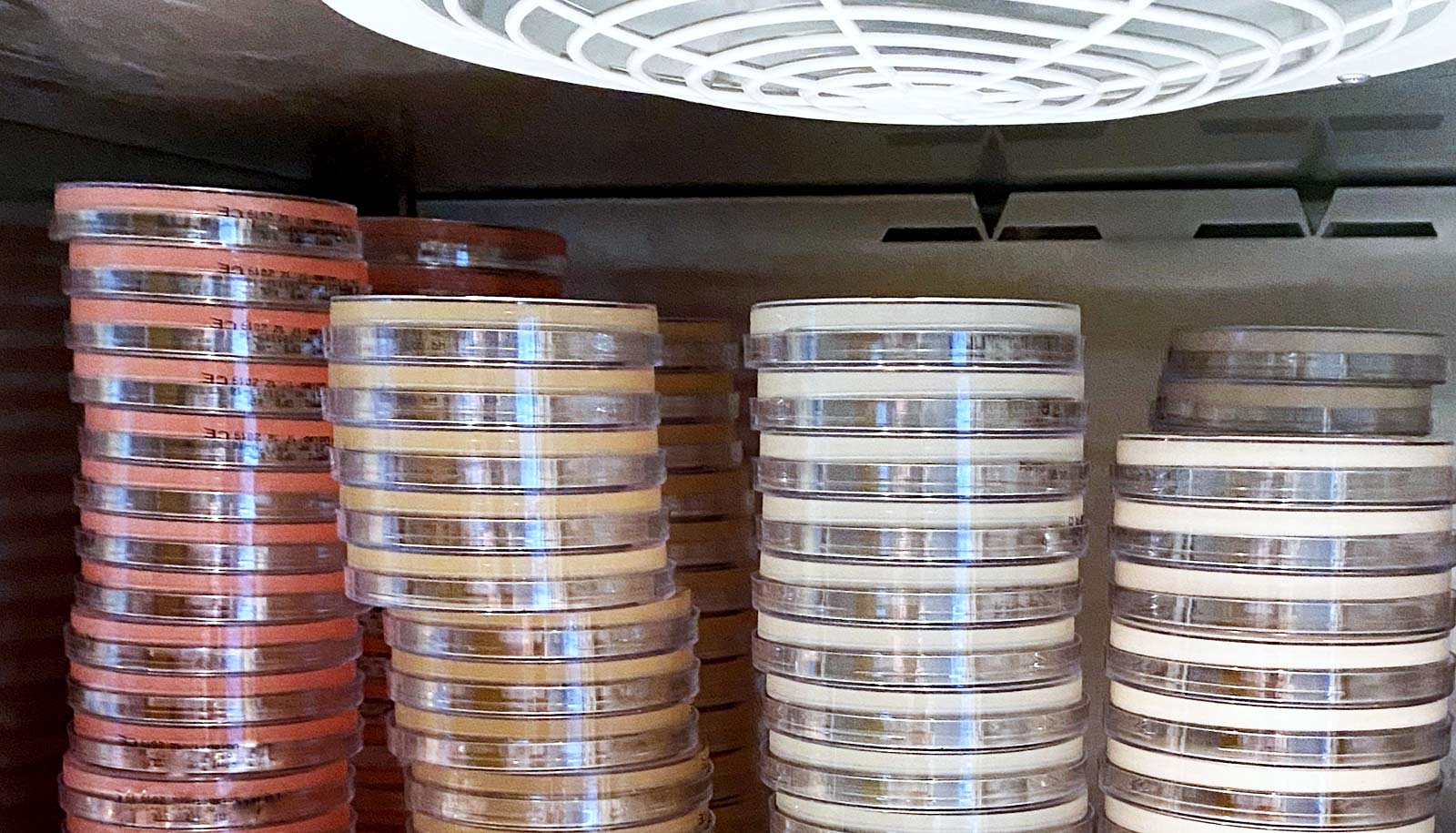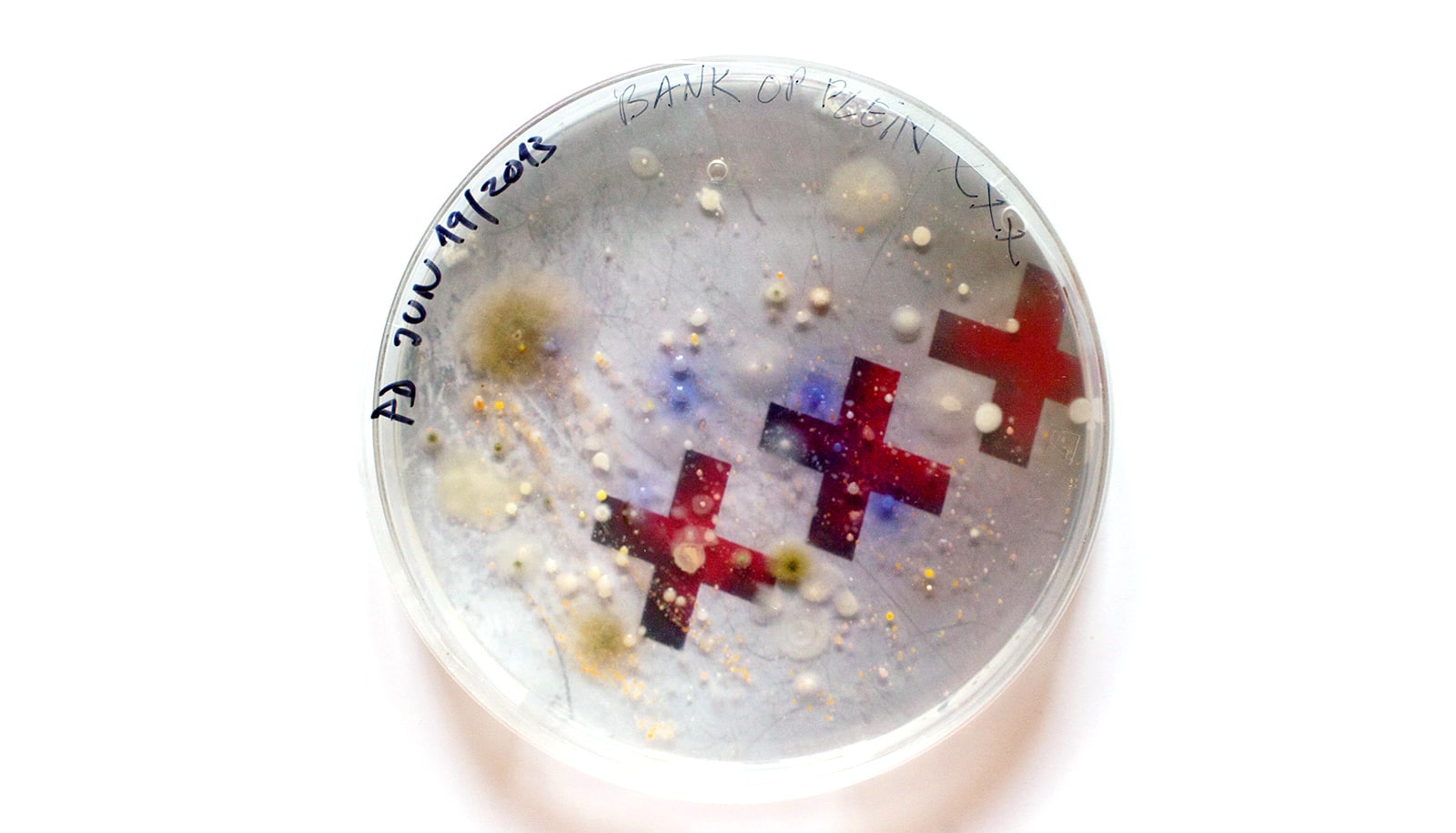New research identifies a factor that may let the fungus Candida albicans “shape-shift.”
As the fungus grows, it can multiply as single, oval-shaped cells called yeast or propagate in an elongated form called hypha, consisting of thread-like filaments.
This dual nature can help the pathogen survive in the body, where it can cause disease, including dangerous hospital-acquired infections.
In a study published in the journal mSphere, University at Buffalo biologists Guolei Zhao and Laura Rusche report that a protein called Sir2 may facilitate C. albicans’ transition from ovoid yeast to thread-like hypha. C. albicans cells that were missing the Sir2 gene were less likely to form true hyphae in lab experiments than cells of the same species that had that gene.
“When we got rid of the Sir2 gene, we saw less of the true hyphae form,” says Zhao, first author and a PhD candidate in biological sciences. This is interesting, she says, because both the “tiny round yeast form” and the “elongated hyphae form” are “essential to infection,” helping C. albicans invade different niches of the human body.
The influence of Sir2 on morphology differed depending on the cells’ surroundings: In a nutrient-poor environment, C. albicans cells that were missing the Sir2 gene were less likely to form both true hyphae and pseudohyphae, a sort of in-between stage where the cells are elongated and grow in chains. But in a nutrient-rich situation, C. albicans lacking the Sir2 gene formed more pseudohyphae even as the formation of true hyphae declined.
More research is needed to understand why, exactly, this might happen, but, “Clearly, the nutrient environment changes the behavior of the cells,” says Rusche, associate professor of biological sciences.
Rusche explains that different cues in the environment—such as the availability of nutrients and temperature—influence whether C. albicans takes on a yeast or filamentous form. Sir2, which belongs to a family of proteins called sirtuins, may impact this process, helping cells interpret and/or respond to what is happening in the external world, she says.
“From our perspective, what’s important is that in either condition—nutrient-rich or nutrient-poor—not having the Sir2 gene changed the balance, which implies that the signal the Sir2 protein is transmitting is an important part of the equation,” Rusche says. “Cells are integrating a lot of information to ‘decide’ what form to take. Knowing more about what triggers the choice could allow us to modulate it in the future. If you can reduce Candida albicans’ ability to generate the filamentous form, maybe you can make it less infectious.”
To learn more about how Sir2 might affect hyphal formation, Rusche and Zhao took a closer look at various aspects of C. albicans’ biology. Among other findings, the scientists showed that the Sir2 protein is localized in the nucleus of C. albicans’ cells, and that removing the Sir2 gene from C. albicans led to a decrease in the activity of certain genes that are usually highly active in hyphal cells.
The researchers also concludes that one of the Sir2 protein’s key functions—removing an acetyl group from other proteins—is likely involved in facilitating the transition to hyphae. In experiments, disrupting this process of deacetylation resulted in fewer true hyphae being formed.
“Sir2 is a protein that I’ve been studying for 20 years, so it’s been at the center of my research for a long time,” Rusche says. “We’ve been interested in how it has different functions in different species. We decided it would be interesting to look at the Sir2 protein in Candida albicans because it has medical relevance, and we wanted to see what our knowledge about this protein can help us learn about the pathogen.”
“I’m interested in pathogenic species,” Zhao says. “The Sir2 protein seems to have this effect in the morphological transition between yeast and hyphal form. We think that this transition may impact the virulence of this human pathogen, so that’s very important.”
The research had support from the University at Buffalo Genome, Environment, and Microbiome Community of Excellence.
Source: University at Buffalo



